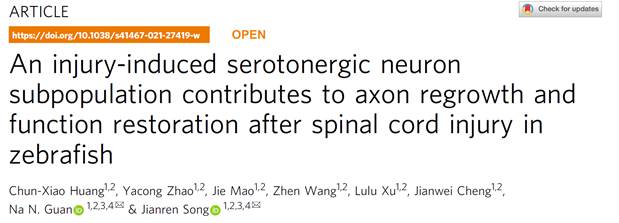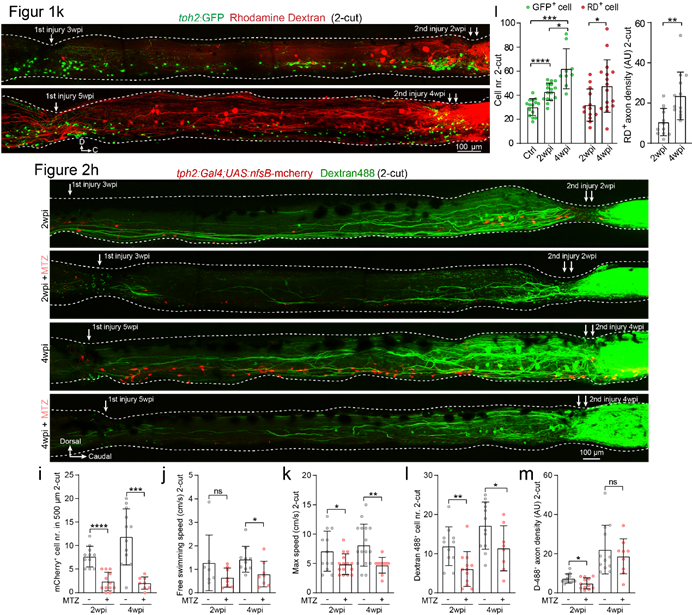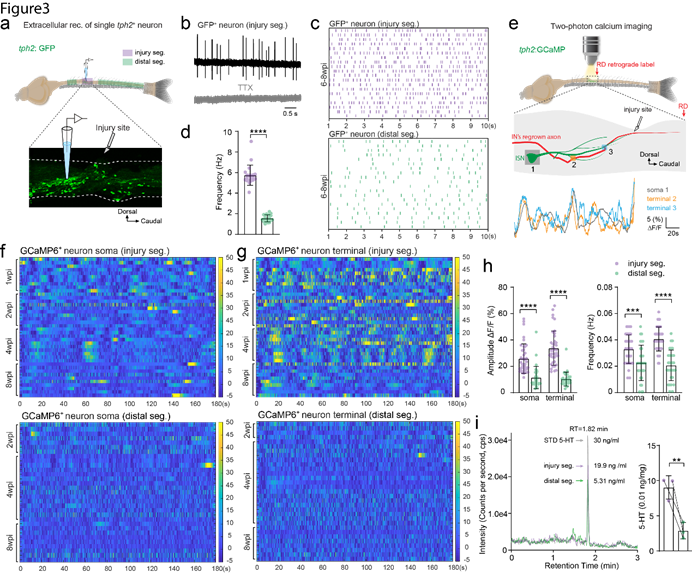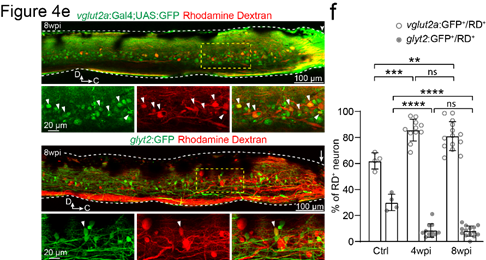Spinal cord injury is a disease with high disability rate in the world. It often occurs in young adults. At present, there is a lack of effective treatment. After spinal cord injury, not only the transient motor command from the brain is lost at and below the damaged plane, but also the spinal central pattern generator neural circuit, which is responsible for controlling the generation of locomotor rhythm and pattern, is severely damaged, resulting in the loss of locomotor function. At present, the research of spinal cord injury mainly focuses on the strategies of repairing brain descending commands such as electrical stimulation or/and combination with specific growth factors, as well as the development and application of new materials as exogenous support auxiliary strategies. However, there is few report on the reconstruction mechanism of spinal central pattern generator neural circuit, the locomotor executor, after injury. Compared with mammals such as adult rats with a low ability of spinal cord regeneration and repair, adult zebrafish has strong spinal cord regeneration ability, can restore motor function 4-6 weeks after injury. It is a good model to study the endogenous repair mechanism of spinal cord.
On December 7, 2021, SONG Jianren's team of Tongji University published a research paper entitled " An injury-induced serotonergic neuron subpopulation contributes to axon regrowth and function restoration after spinal cord injury in zebrafish" in the journal Nature communications, which systematically analyzed the repair law of the spinal central pattern generator after spinal cord injury. It revealed the mechanism of intraspinal serotonin to promote axon regrowth, and found the target receptor involved in the repair mechanism, which provided a new idea for the fundamental research and treatment of spinal cord injury.

Serotonin plays an important role in the activation and modulation of the spinal central pattern generator. The researchers found that after spinal cord injury, a subpopulation of new-born injury-induced serotonergic neurons aggregated at the injury site, and their number was positively correlated with axonal regrowth of spinal interneurons and recovery of locomotor function. In the 2-cut spinal cord injury model created by the researchers, which was independent of the descending system of the brain, it was also verified that a large number of new-born serotonergic neurons appeared (Figure 1k). After the chemogenetic ablation of these new-born serotonergic neurons in the 2-cut injury model, the recovery of spinal locomotor function was impaired (Figure 2h). It was proved that the newborn serotonergic neuron subpopulation could promote the axon regrowth and recovery of locomotor function after spinal cord injury.

The researchers further studied the functional and molecular properties of these injury-induced serotonergic neurons. Through electrophysiology, two-photon imaging, gene expression analysis and chemical quantification, it was found that in the same injured animal, compared with the serotonergic neurons in the non-injured segments, the serotonergic neurons in the injured segment displayed spontaneous action potentials with higher frequency (Figure 3b, c, d), showed stronger calcium oscillation (Figure 3f, j, h), released more serotonin (Figure 3i), and showed distinctive transcriptomic signature. It was suggested that these injury-induced serotonergic neurons maintained a high concentration of released serotonin at the injury site through their high-frequency and constant firing, so as to promote the repair of damaged spinal circuit and the recovery of locomotor function.

The researchers found that after complete spinal cord injury, the locomotor function of zebrafish restored, but the ratio of excitatory glutamatergic and inhibitory glycinergic interneurons in the spinal central pattern generator had changed greatly, from 1:1 in non-injured animal to 8:1 after injury (Figure 4e, f). The reconstructed spinal locomotor circuit had changed compared with normal conditions, especially the composition of excitatory and inhibitory neurons. Then targeting the repair mechanism of excitatory neurons with stronger regeneration ability became a breakthrough.

By means of RNA sequencing, the researchers found that glutamatergic neurons with axons regrow through the injury site highly expressed htr1b. Treatment with Htr1b receptor agonists after spinal cord injury could promote axonal regrowth of spinal interneurons and recovery of locomotor function. The htr1b receptor gene in zebrafish was knocked out by CRISPR-Cas9. In the htr1b-/- animal, the axon regrowth of spinal glutamatergic interneuron and the recovery of locomotor function was impaired after spinal cord injury. It was suggested that Htr1b receptor is a target of intraspinal serotonin to promote axon regrowth and function restoration after injury. Article link: https://www.nature.com/articles/s41467-021-27419-w.pdf.
HUANG Chunxiao, an assistant researcher of Tongji University, is the first author of this paper, and Professor SONG Jianren and Associate Professor GUAN Na of Tongji University are the co-corresponding authors of this paper. This study was guided and supported by Professor ZHANG Xiaoqing of Tongji University School of Medicine and researcher HE Jie of Institute of neuroscience, Chinese Academy of Sciences, and was supported by National Key R & D Plan, National Natural Science Foundation of China, Major Special Projects of Shanghai Municipal Science and Technology Commission, Shanghai Natural Science Foundation, Shanghai Fourth People's Hospital Affiliated to Tongji University, clinical research center of brain and spinal cord of Tongji University, Institute of brain function and artificial intelligence transformation of medical College of Tongji University, etc.
